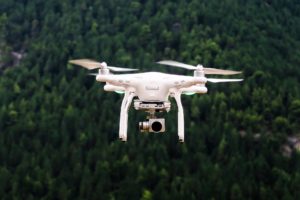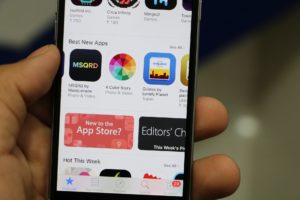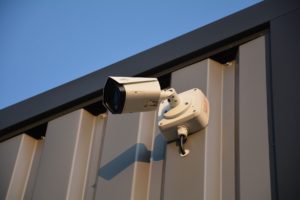Technology is one sector that is likely to have a significant impact on future outbreaks. With recent innovations such as mobile computing, mobile communications, and broadband internet, it has been possible to trial several innovative approaches to the pandemics response. Although technology has been used to fight against pandemics, the recent outbreak has caused a step-change from the technology sector.
People are now suggesting we need to prepare for the next pandemic through the use of germ war games. By using these technologies as recommended and initiating war games, we can validate our readiness for the next pandemic.
1. Cellphone
 During a pandemic, communication is a critical tool to ensure we can spot the virus spreading early and also make attempts to contain it by educating the local population. People should be informed and reminded to use appropriate precautions. In the recent outbreak, several facilities were effectively shut down as staff was evacuated, creating a secondary and potentially more damaging issue, as primary healthcare is no longer available. We can do anything now to ensure stable communication. The region will have a significant impact on the future pandemic. It is through the use of these devices that we can reach a population to make them aware of issues and treatments for some diseases.
During a pandemic, communication is a critical tool to ensure we can spot the virus spreading early and also make attempts to contain it by educating the local population. People should be informed and reminded to use appropriate precautions. In the recent outbreak, several facilities were effectively shut down as staff was evacuated, creating a secondary and potentially more damaging issue, as primary healthcare is no longer available. We can do anything now to ensure stable communication. The region will have a significant impact on the future pandemic. It is through the use of these devices that we can reach a population to make them aware of issues and treatments for some diseases.
2. Robots
 Hospitals in China already have zero-contact distribution server robots. What medical staff do is they place items on robots, robots go to patients’ rooms, and patients get the things free-contact. After completing a task, robots will automatically return to the nurse’s station, where they are disinfected for their next delivery. Robots can provide contact-free delivery service to 20 wards, on average, in some hospitals.
Hospitals in China already have zero-contact distribution server robots. What medical staff do is they place items on robots, robots go to patients’ rooms, and patients get the things free-contact. After completing a task, robots will automatically return to the nurse’s station, where they are disinfected for their next delivery. Robots can provide contact-free delivery service to 20 wards, on average, in some hospitals.
3. Drones
 Drones above various parts of China are being used to share information on loudspeakers, carrying signs with QR codes spraying disinfectant, delivering packages, and taking people’s temperatures.
Drones above various parts of China are being used to share information on loudspeakers, carrying signs with QR codes spraying disinfectant, delivering packages, and taking people’s temperatures.
When conducting body temperature, drones use Infrared Thermal Imaging, which has proven more accurate than human-conducted readings and massively expedites the evacuation of the community. Also, drone readings have helped reduce close contact between workers and residents, minimizing the risk of secondary infection. In some parts of China, their police have used drones fitted with cameras and loudspeakers to disperse the community and direct individuals in the streets to return home.
4. Mobile Apps
 The United Kingdom recently launched an app to self-report their symptoms. Covid-19 Symptom Tracker, which was downloaded many times in three days, helps identify high-risk areas, among other places. In South Korea, they have an app called Corona 100m that has mapped the locations of Covid-19 patients and alerts all users if they come within 100 meters of an infected individual.
The United Kingdom recently launched an app to self-report their symptoms. Covid-19 Symptom Tracker, which was downloaded many times in three days, helps identify high-risk areas, among other places. In South Korea, they have an app called Corona 100m that has mapped the locations of Covid-19 patients and alerts all users if they come within 100 meters of an infected individual.
India has just launched an app that will tell users if they came in contact with someone who later tested. The app will be based on location obtained from the infected individual smartphone. It will also use short-distance signals of Bluetooth between cellphones, like Singapore’s TraceTogether App, which can help authorities to trace contacts of infected people. In China, apps developed by Tencent and Alibaba give people a color code based on their travel history and health conditions. This code will determine whether a person gains entry into a mall or a subway station, or can travel between cities.
5. Virtual Classrooms
 Virtual education could change the image of higher education and K-12, as conversation rates multiply. Generally, the environment of OMO (online-merge-offline) will leap onto the scene, iteration speed, driving digitization, and efficiency of the professional training and education.
Virtual education could change the image of higher education and K-12, as conversation rates multiply. Generally, the environment of OMO (online-merge-offline) will leap onto the scene, iteration speed, driving digitization, and efficiency of the professional training and education.
6. Online Jobs
 Putting the health and safety of employees, the world’s biggest remote work experiment has been revealed by the Covid-19 pandemic.
Putting the health and safety of employees, the world’s biggest remote work experiment has been revealed by the Covid-19 pandemic.
On a recent call, Alibaba CEO Daniel Zhang told investors and entrepreneurs that, while a tremendous challenge for society, Covid-19 also gives people a “chance to try a new way of living and new way of work.”
Staying home and avoiding contact is essential. And every individual counts. But our ability to build and iterate on entirely digitized platforms for the future of work is a forced opportunity like no other.
7. CCTV’s
 Reviewing CCTV footage from the location they had been to was one of the best methods that can be used by the local administration to track down 900 people, the patient could have potentially been infected. Singapore and South Korea, have used CCTVs extensively in contact-tracing. To enable contactless and rapid temperature detection, China is using AI-powered thermal cameras to identify those in a crowd who have a fever. The country is also deploying facial-recognition systems to identify those not wearing masks.
Reviewing CCTV footage from the location they had been to was one of the best methods that can be used by the local administration to track down 900 people, the patient could have potentially been infected. Singapore and South Korea, have used CCTVs extensively in contact-tracing. To enable contactless and rapid temperature detection, China is using AI-powered thermal cameras to identify those in a crowd who have a fever. The country is also deploying facial-recognition systems to identify those not wearing masks.
Technology definitely cannot stop the spread of the pandemic. Still, it can help educate, warn, and empower those on the ground and those that need to be aware of the situation to reduce the impact. There are several ways where technology has been used in trials during the Ebola outbreak that can be accelerated.
